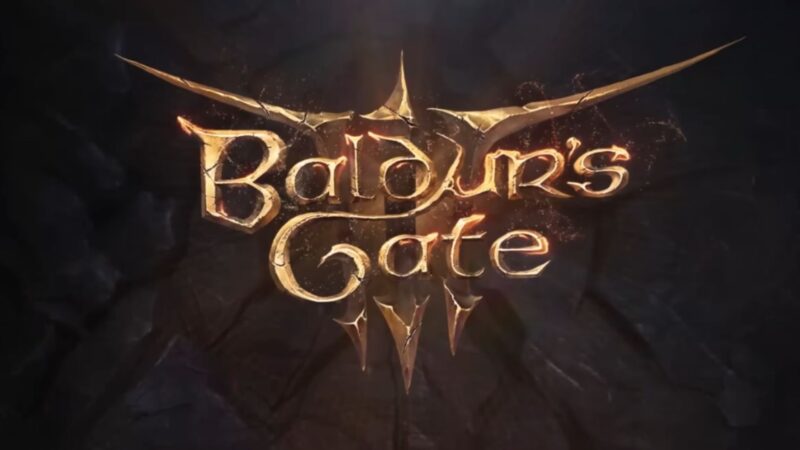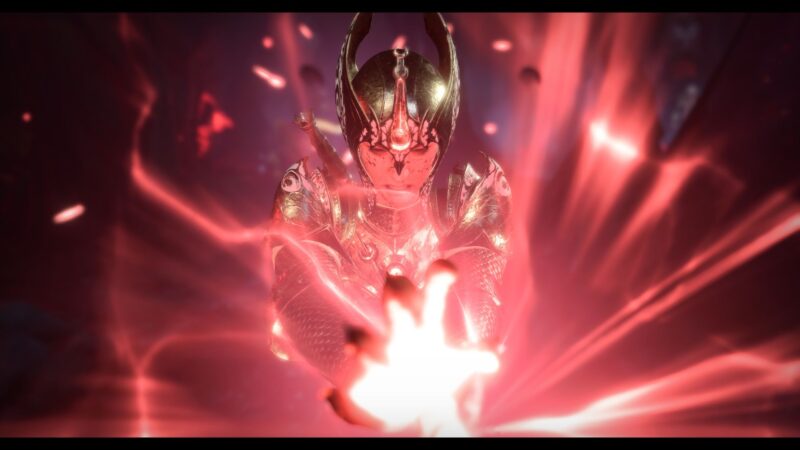Adding another layer to already strategic turn-based combat, we’ll clarify to to make the best use of reactions in Baldur’s Gate 3: Reactions Explained
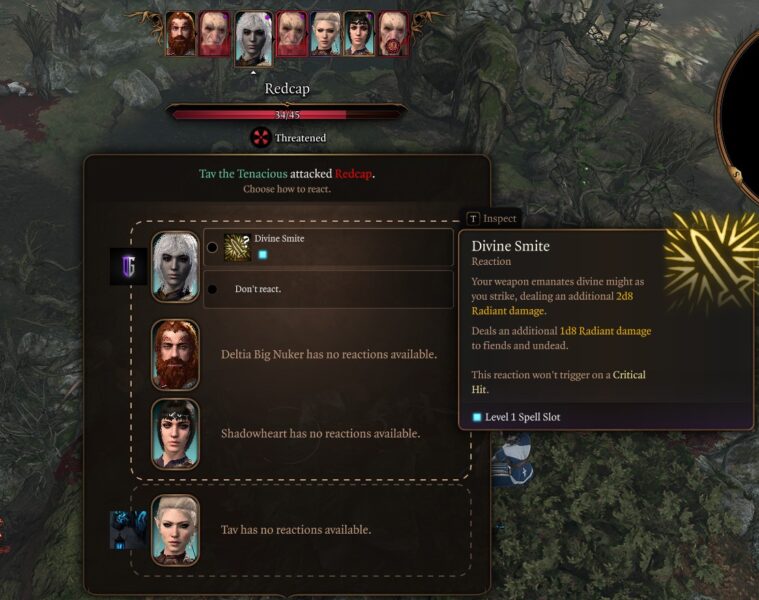
In Baldur’s Gate 3, reactions play a crucial role in shaping the flow of combat and interactions within the game. Reactions are special actions that characters can take in response to specific triggers during their turn or outside of their regular actions. Whether it’s an opportunity attack against a foe leaving melee range or a defensive maneuver to protect an ally, mastering reactions is essential for tactical advantage. These dynamic responses add depth and complexity to the game’s strategic gameplay, allowing players to exploit opportunities or defend against threats in this thrilling and immersive RPG adventure.
What are Reactions in Baldur’s Gate 3?
In Baldur’s Gate 3, reactions are special abilities that you can use to respond to certain events or triggers. Reactions are a limited resource, and you can only use one of them per round of combat, per party member. There are a variety of different reactions in Baldur’s Gate 3, and they can be used for a variety of purposes. Some reactions can be used to defend yourself from attacks, while others can be used to buff your allies or debuff your enemies.
Nearly all Reactions will require the use of a Reaction Resource and some will require additional class specific resources such as a spell slot. Most reactions are class specific, and only available to use by certain classes or sub-classes. The one except to this is Attack of Opportunity which is available to all characters regardless of class.
Attack of Opportunity
Keep in mind that reactions are also available to your opponents in combat! Attack of Opportunity is available to them, as well. Attack of Opportunity allows you to make an attack against an enemy who moves out of your reach. In game, you will see a warning for this on screen before you make a move. The game will show you a white line indicating a movement path before you click to move. If it takes you close to an enemy, a sharp red arrow will point towards from the feet of an enemy to you. This indicates that if you choose to move that direction, the enemy will get to attempt an Attack of Opportunity.
Also Check:- BG3 Interactive Map
If you are surrounded and trying to get away from a group of enemies, an Attack of Opportunity will spring up from most if you just try to turn around and move back. Make sure to click the Disengage action first, and this will give you a chance to get away without being stabbed in the back.
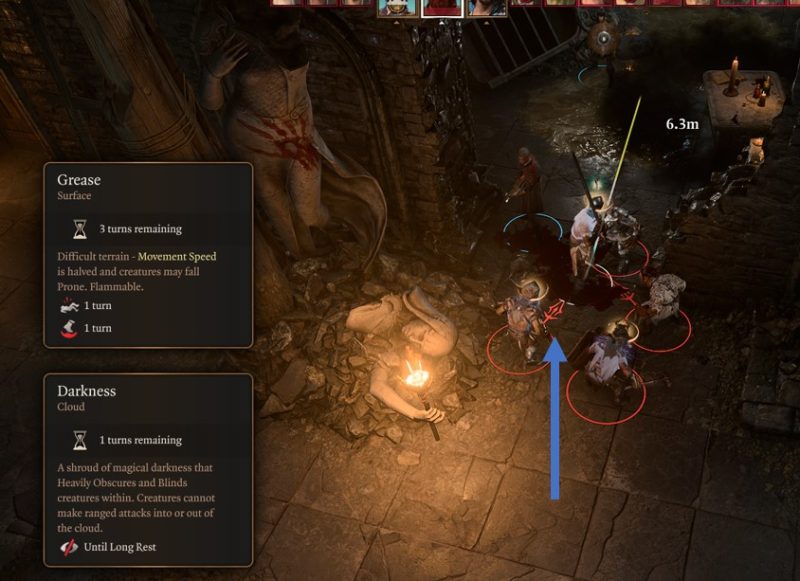
All Reactions in Baldur’s Gate 3
Here is a list of Reactions in Baldur’s Gate 3:
- Attack of Opportunity – This reaction allows you to make an attack against an enemy who moves out of your reach.
- Available to all classes
- Requires Reaction Resource
- Cutting Words – Use your wit to distract a creature and sap its confidence.
- Available only to College of Lore Bard
- Requires Reaction Resource and Bardic Inspiration
- Hellish Rebuke – When you take damage, you can retaliate and surround your attacker in hellish flames that deal 2d10 Fire Damage.
- Available only to Oathbreaker Paladin
- Requires Reaction Resource and Level 1 Spell Slot
- Hellish Rebuke Level 2 – When you take damage, you can retaliate and surround your attacker in hellish flames that deal 3d10 Fire Damage.
- Available only to Oathbreaker Paladin
- Requires Reaction Resource and Level 2 Spell Slot
- Divine Smite – Your weapon emanates divine might as you strike, dealing an additional 2d8 Radiant Damage. Additional damage to fiends and undead.
- Available only to Oath of Devotion and Oath of the Ancients Paladins
- Requires Level 1 Spell Slot
- Divine Smite on Critical Hit – Your weapon emanates divine might as you strike, dealing an additional 2d8 Radiant Damage. Additional damage to fiends and undead.
- Divine Smite Level 2 – Your weapon emanates divine might as you strike, dealing an additional 3d8 Radiant Damage. Additional damage to fiends and undead.
- Available only to Oath of Devotion, Oath of the Ancients, and Oathbreaker Paladins
- Requires Level 2 Spell Slot
- Divine Smite on Critical Hit Lvl 2 – our weapon emanates divine might as you strike, dealing an additional 3d8 Radiant Damage. Additional damage to fiends and undead.
- Available only to Oath of Devotion and Oath of the Ancients Paladins
- Requires Level 2 Spell Slot
- Riposte – When a creature misses you with a melee attack, you can retaliate with a powerful attack that deals an additional 1d8 damage.
- Available only to Battle Master Fighters
- Requires Reaction Resource and Superiority Die
- Giant Killer – If a large or bigger creature attacks you, you can retaliate with a melee attack.
- Available only to Hunter Rangers
- Requires Reaction Resource
- Counterspell – Interrupt a creature in the process of casting a spell, making it fail so it has no effect.
- Available only to Sorcerers, Warlocks and Wizards
- Requires Reaction Resources and Level 3 Spell Slot
- Deflect Missiles – Reduce the damage from a ranged weapon attack. The damage you take from the attack is reduced by 1d10 + your Dexterity Modifier + your monk level.
- Available only Monks
- Requires Reaction Resources and Ki point
Using Reactions in Combat in Baldur’s Gate 3
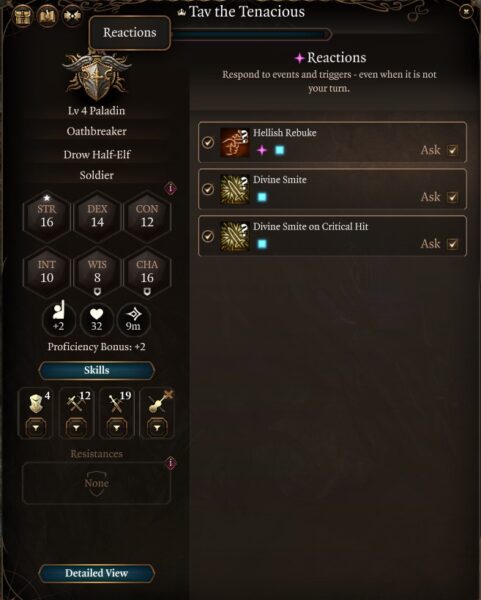
To use reactions in Baldur’s Gate 3, you need to first pull up the reaction menu for your character. You can find this menu in the character tab as seen above. Here you will see a list of the reaction types available to your character. Depending on your class there may be nothing listed (Attack of Opportunity is rolled for automatically in combat).
Next, for each listed reaction there will be two boxes to check (or uncheck, depending on how you want to play). The first check circle is located to the left of the listed reaction’s icon. When selected, any event that should trigger the reaction will do it, allowing it to be executed as expected. You MUST enable reactions by checking this little circle, otherwise the game will not trigger them.
The second choice is in a little box all the way to the right. If you check this box to ‘Ask’, then when the conditions are met for that reaction and it is triggered in game, the game will first ask you to confirm if that’s what you want the character to do. If left unchecked, but the reaction is active, then the game will trigger it automatically.
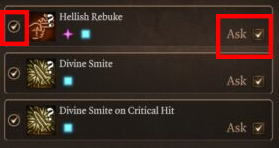
Any creature in DnD has one “Reaction” per round of combat. It’s a combat resource similar to your action and bonus action. However, it has some important differences. You need a specific trigger to allow you to use a reaction (such as an enemy leaving your melee range triggering Attack of Opportunity). Additionally, it also doesn’t need to be your turn to use your reaction.
Additional Tips for Reactions
Here are some tips and tricks for using reactions in Baldur’s Gate 3:
- Be aware of the triggers for your reactions. This will help you to know when to use them.
- Consider the benefits and drawbacks of each reaction. Some reactions are more powerful than others, but they may also have a greater cost.
- Use reactions to defend yourself from attacks. This is one of the most common uses for reactions.
- Use reactions to buff your allies or debuff your enemies. This can be a great way to turn the tide of a battle.
Reactions can be a powerful tool in combat, and they can be used to turn the tide of a battle. By understanding how reactions work, you can use them to your advantage and maximize your chances of success.
Looking for more Baldur’s Gate 3?
Thank you for reading our Baldur’s Gate 3: Reactions Explained guide. We provide the latest news and create guides for Baldur’s Gate 3. Additionally, check out our website, watch Deltia play games on Twitch, or visit his YouTube channel!
 Reddit
Reddit
 Email
Email
